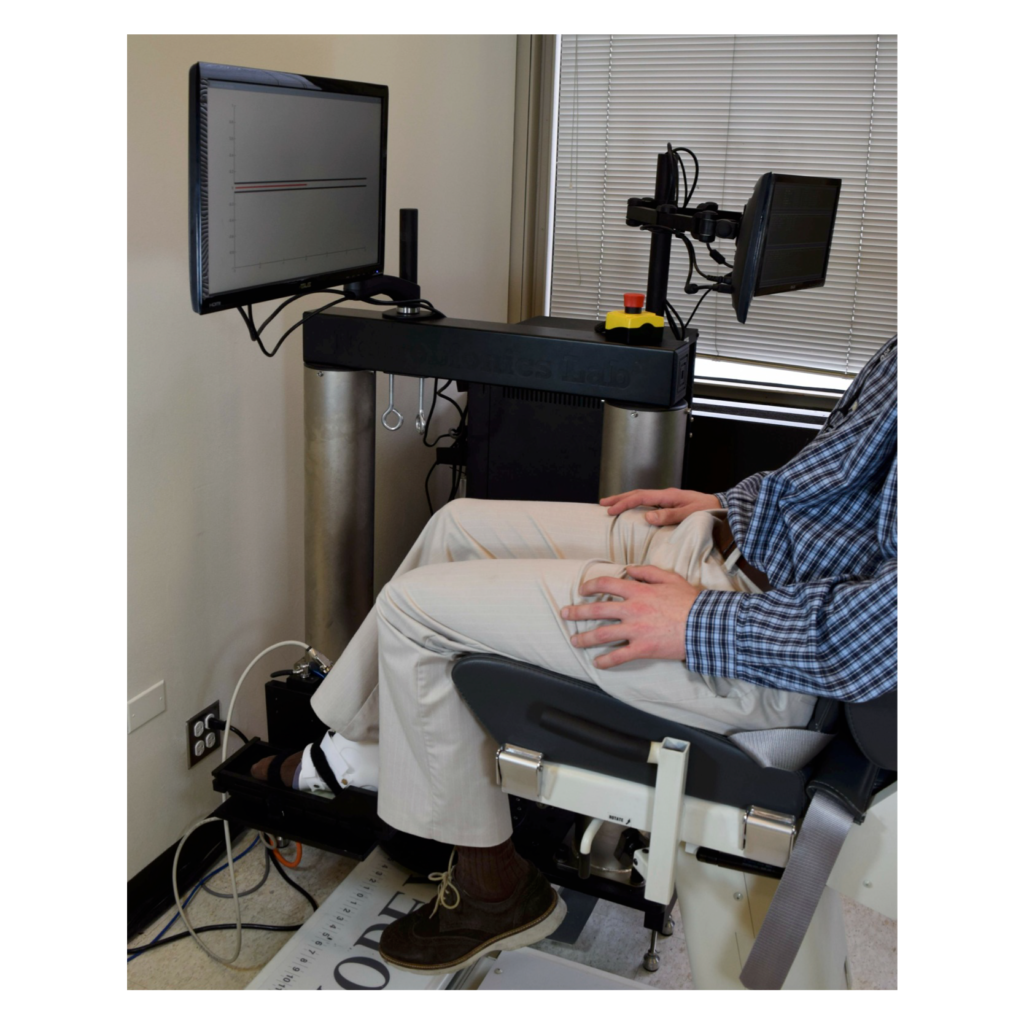Understanding Human Control of the Ankle Joint
Motivation
Biomechanical science is interested in understanding how people control their movement. By advancing this body of knowledge, it is envisioned that engineers will be able to improve wearable robotic technologies by incorporating how people naturally move and how they interact with their environment. Within this work, we focus on quantifying the neuromuscular control that occurs at the ankle joint. Specifically, we aim to study how people control the cyclic movement of a foot pedal under different levels of rotational resistance, or stiffness. By investigating this interaction, we can answer what type and range of control the human ankle joint is capable of, especially when coupled to a motorized, wearable robot.
Approach
We quantify the neuromuscular control by estimating a biomechanical measure known as joint impedance. Joint impedance is quantified by measuring the torque-angle response for each interaction and relating them to parameters of an equivalent mechanical system, i.e. inertia, stiffness, and damping. The general test procedure is as follows: (1) A person is seated with their leg completely constrained except for their foot. (2) The foot is attached to a motorized pedal, which has different programmable rotational stiffnesses. The motor’s axis of rotation is aligned with the ankle’s axis of rotation. (2) The person cyclically moves, rotates, the pedal throughout their range of motion by following the position of their ankle on a visual feedback monitor. (3) Random angular disturbances are added by the motorized pedal, perturbing the person’s foot motion. (4) Measurements during the random perturbations are analyzed in terms of the joint impedance parameters. (5) Comparisons of the person’s joint impedance are made with respect to the motorized pedal’s rotational stiffness. Analyses are performed to study if a person’s control of their ankle joint matches the interactive environment, or if deviations occur and when. The answers aim to reveal the nature of the human response to these wearable robotic environments.
Contributors: Timothy Reissman, Elliott Rouse

